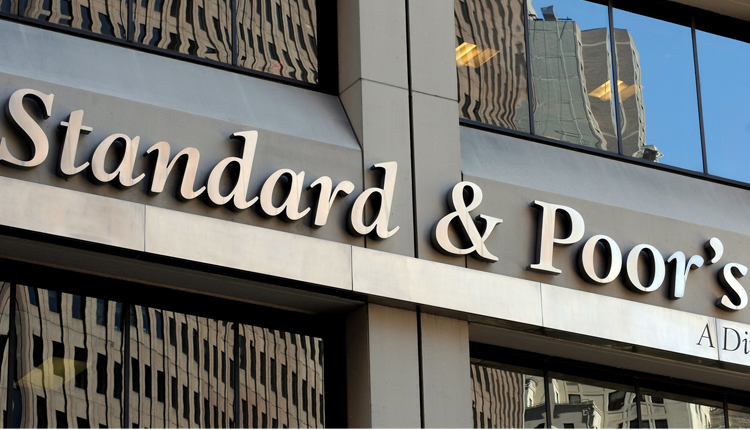Standard & Poor’s raised its ratings on two Egyptian banks on Tuesday, saying the country’s GDP growth and external foreign exchange reserves are strengthening buoyed by the IMF-backed reforms.
It has also affirmed its rating for another Egyptian bank.
The rating agency raised its long-term issuer credit ratings on Banque Misr and the National Bank of Egypt (NBE) to ‘B’ from ‘B-‘, and affirmed ‘B’ short-term issuer credit ratings on both banks. It revised the outlooks on the two banks to stable from positive.
“The rating actions reflect strengthening GDP growth and rising external foreign-exchange reserves in Egypt, alongside the implementation of reforms that are supported by a three-year $12 billion International Monetary Fund extended fund facility programme.” S&P said in a statement.
It has also affirmed the ‘B’ long-term and short-term issuer credit ratings on Egypt’s Commercial International Bank (CIB), with a ‘stable’ outlook.
Egyptian Pound:
The rating agency also said the liberalisation of the Egyptian pound in November 2016 had reduced the country’s external imbalances and boosted its remittances, export receipts, both of goods and tourism, and portfolio inflows.
“We believe that Egyptian banks will benefit from the improved economic and political climate in the country through contained credit risks and strengthened business performance. We think that in the improved environment, domestic banks’ asset quality will be less vulnerable than we previously assessed.”
Improved Growth Forecast:
S&P said it revised its growth forecasts upward for Egypt to 5.4 percent over the financial years 2018-2021, compared to 4.4 percent, given the strong rebound in activity in several sectors including natural gas, tourism, construction, and manufacturing.
The rating agency also said the credit risk in Egypt’s economy ‘is improving’.’
“Credit growth has stabilised and we expect it to be about 15 percent -20 percent over the next 12-18 months. The high growth of over 50 percent from June 2016 to June 2017 includes the devaluation of the Egyptian pound against the U.S. dollar following the currency floatation in November 2016.”
Credit Growth:
“Excluding the foreign-exchange impact, credit growth would have been 21%. Credit growth has been a lot lower in subsequent periods, and we forecast that it will remain so.”
The rating agency said banks in Egypt were mostly focused on the corporate sector, which comprises a limited number of high-quality borrowers. Leverage is low, meaning that only the better-quality borrowers have access to credit. A large portion of lending is to government-related segments carrying Ministry of Finance guarantees.
“These factors explain the relatively moderate levels of reported problem loans in the system and the good reserve coverage. In our view, system data published on asset quality somewhat understate the real amount of problem loans as they exclude restructured loans or asset swaps.”
“Still, we think that problem loans in Egypt are manageable under our base-case scenario.”
S&P added that banks’ exposure to cyclical sectors, mainly the tourism sector, is limited and does not exceed 5 percent of total loans, although such sectors still account for a higher portion of nonperforming loans.
“The level of foreign-currency lending is significant–historically around 30 percent of total loans, rising to 40 percent after the recent depreciation of the local currency and reducing to 35 percent at the end of the first quarter of 2018.”
The rating agency said the Egyptian pound is now more stable and the asset quality of borrowers of foreign currency is improving along with foreign-currency inflows from the tourism sector, workers’ remittances, and tolls from ships using the Suez Canal.
“We have therefore revised our economic risk score to ‘9’ from ’10’ with a stable trend. We have affirmed our industry risk score at ‘8’ with a stable trend. Overall, we now assess Egypt’s Banking Industry Country Risk Assessment (BICRA) as being in Group ‘9’ as opposed to Group ’10’ previously.”
As a result, S&P has revised upward its bank anchor to ‘b+’ from ‘b’. This led to revise upward the stand-alone credit profiles (SACPs) of Banque Misr and NBE to ‘b’ from ‘b-‘, and that of CIB to ‘b+’ from ‘b’. These results in the issuer credit ratings on Banque Misr and NBE rising to the same level as our long-term sovereign rating on Egypt of ‘B’.
The issuer credit rating on CIB is unchanged, as it remains capped by the sovereign rating despite an improved SACP.


